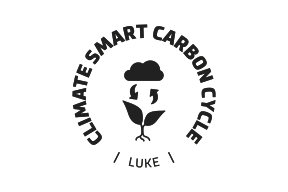For World Wetlands Day: Launch of the most comprehensive and up to date European Wetland Map
A new European Wetland Map shows Europe's peatlands, floodplains and coastal wetlands more comprehensively than ever before in one map. Compiled from about 200 data sources, this map informs policy makers, land users and anyone interested in wetlands not only about their distribution and types, but also, for example, about potential areas at risk of flooding. On the occasion of World Wetlands Day on February 2nd, the Greifswald Mire Centre is publishing the map in a collaboration with the projects ALFAwetlands, WET HORIZONS and Building a European Peatlands Alliance.
On time for World Wetlands Day, the European Wetland Map (‘EWM’) significantly enhances the state-of-knowledge on wetlands across Europe by locating, assessing and merging the latest geospatial data. It combines various GIS data on wetland types and their distribution on mineral soil in coastal environments and floodplains, as well as for a large variety of peatlands in one most comprehensive, easily accessible resource.
"Over a period of two years, we collected, checked and merged more than 200 geodata on wetlands and especially peatlands from various sources. Now we are happy about this standardised dataset that makes widespread European wetlands visible and enhances their analysis, understanding and management", says Dr Cosima Tegetmeyer of the Greifswald Mire Centre, one of the map’s developers.
Users can freely download the European Wetland Map for their own analyses. Politicians can find out where current land use and infrastructure might be at increasing risk by flooding in times of climate change and adjust decisions accordingly. Land users and landowners can recognize where their land overlaps with peatlands and wetlands – even if wetland features are no longer visible due to drainage, as in many of Europe’s former extensive floodplains and peatlands.
“The released European Wetland Map represents a significant step forward, for example in assessing climate mitigation and biodiversity policies for the European Commission. It allows more effective modelling of scenarios related to climate mitigation and nature restoration policies, thus aiding policymakers in coming to more informed, science-based decisions.”, says Dr. Juraj Balkovic, research scholar at the International Institute for Applied Systems Analysis (IIASA).
A vector dataset on the geographical distribution of the wetlands considered is available on a country basis in an ArcGIS geodatabase as well as a country-specific high resolution Geo-TIFF collection (grid size: 1 arcsecond).
Background: The World Wetlands Day (WWD) (Link: www.worldwetlandsday.org)
This day has been drawing attention to the importance of wetlands, including peatlands, on February 2nd every year since 1997. The Ramsar Convention, the international agreement for the protection of wetlands, was adopted on February 2nd in 1971. Since 2021 the WWD has been recognized as an international day by the United Nations. Therefore, their restoration and protection is important.
Due to pollution, drainage and agriculture, fires and overfishing, wetlands, which include peatlands, are under threat worldwide or have already been destroyed. Yet they are guarantors of biodiversity and climate protection. Among other things, wetlands offer people protection from drought and flooding, purify water and regulate the microclimate. In Germany, 95 % of former wetlands have been drained and are no longer recognizable as such today.
ALFAwetlands and WET HORIZONS:
The European Wetland Map work is part of the research and innovation projects “ALFAwetlands- Wetland restoration for the future” (Grant Agreement No. 101056844) and “WET HORIZONS” (Grant Agreement No. 101056848), funded by the Horizon Europe Framework Program of the European Union.
“Enhancing wetland mapping was one of the key goals of our project, and I am proud to see this achievement realized while also showcasing the successful collaboration between two EU-funded projects” says Dr Liisa Ukonmaanaho, project coordinator of ALFAwetlands, Natural Resources Institute Finland (Luke)
The preparation of the map has been further supported by the project "Building a European Peatland Alliance" (Grant Agreement No. 81290291). This project is funded by the European Climate Initiative (EUKI) of the German Federal Ministry for Economic Affairs and Climate Action (BMWK).
Links:
World Wetlands Day: www.worldwetlandsday.org
European Wetland Map: Tegetmeyer, C., & Kaiser, M., Barthelmes, A. (2024). The European Wetland Map ('EWM') [Data set]. Zenodo. https://zenodo.org/records/14745285
Links of collaborating projects:
ALFAwetlands - wetlands restoration for the future project
WET HORIZONS project
EUKI Building a European Peatlands Alliance
www.greifswaldmoor.de



